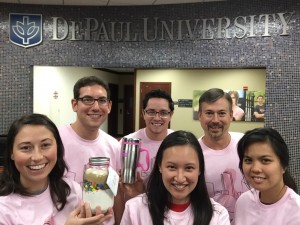I’ll always remember my first trip to my company’s site in Ludwigshafen, Germany. The circumstances of my involvement were that I was a local expert in the use of the data collection software application used in our facility. The same software was being implemented at the German site so that our two laboratory facilities would share a database and thus harmonize business practices. Prior to my departure, I was warned of the gruffness of our German colleagues, whom we had inherited through acquisition of their company. The Germans were criticized for passive-aggressively clinging on to their old ways, ostensibly because they feared their site would be divested anyway, and they’d all lose their jobs. It was in this environment that I needed to form some bonds with my German counterparts to help ensure the successful adoption of the new software.
Even though I had traveled throughout Europe several times after college, I was excited to return and experience a foreign culture again. I didn’t mind that Ludwigshafen was a mostly industrial city, rebuilt after extensive World War II bombing, that didn’t have much to offer in terms of green space or other urban beauty. I enjoyed just being there, noticing the subtle differences in architecture, automobiles, public transportation, and how people behaved when walking around. I brought this enthusiasm to the meetings with our German colleagues. Although they were somewhat cold and reserved during the initial meetings, things really loosened up after we were able to interact socially. The Germans were quite eager to show us points of interest in the surrounding area. We toured castles, churches, breweries, vineyards, and museums, and our hosts were very proud to demonstrate their knowledge of these sites. Beer was consumed on many a late evening. I was truly appreciative of their hospitality, and our meetings became more open, honest, and productive because of the fun we were able to share. Elimination of these barriers helped put the software in place, which is still used by our company.
My bond with our German colleagues remains today, more than nine years after that initial trip. Trust naturally developed also because they were never laid off as they feared. I have been able to return the favor of hospitality whenever they visit our site. Besides our conference calls and WebEx meetings, which are important for our continued collaboration, I find myself frequently calling my German counterpart just as I would do to speak with an American colleague. We’re able to joke about topics like the Women’s World Cup soccer tournament (the USA women beat Germany in 2015). Furthermore, I sense something is missing when I don’t check in with my German colleagues often enough. From these experiences, I learned the importance of building and maintaining relationships with remote colleagues, to ensure success in business.
A recent blog post from the Project Management Institute (PMI) describes the challenges and successes of project managers who traveled to and lived in places far more exotic than Germany. What experiences have you had in your career with ex-US colleagues, and what tips can you provide for improving collaboration with them?

